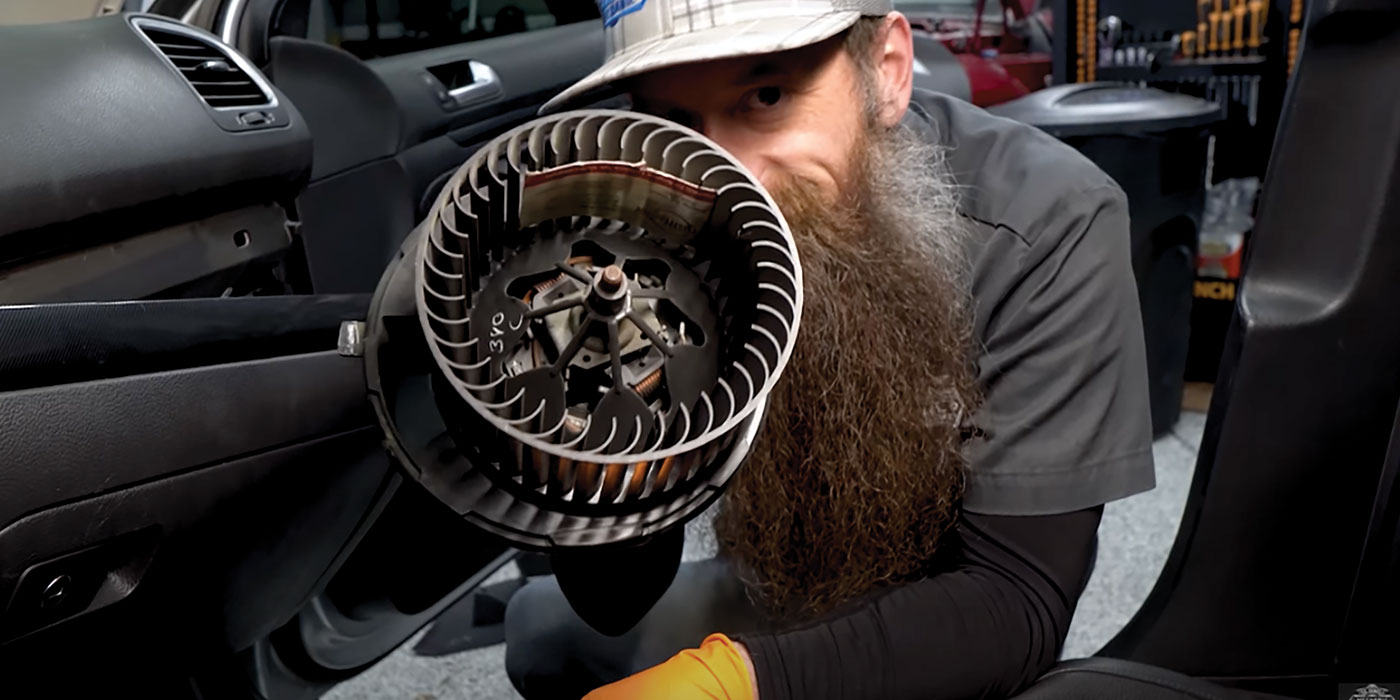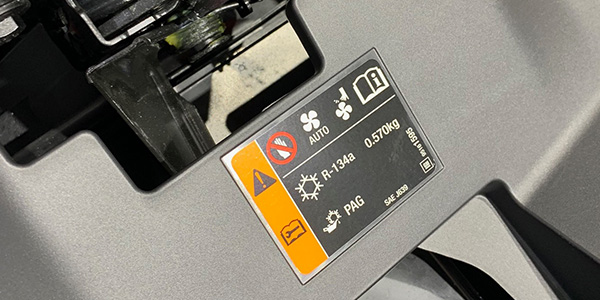Ed Sunkin, Editor, also contributed to this report
Nobody knows exactly how refrigeration systems will change in the future, but it appears likely that R-134a’s days are numbered. The Europeans are seriously considering phasing it out starting in 2009. If that happens, the North American OEMs may follow suit.
Though R-134a poses no danger to the ozone layer if it escapes into the atmosphere, it is a “greenhouse gas” with a fairly high global warming potential of 1300 (compared to 1 for carbon dioxide, which is nature’s own greenhouse gas). A leak that allows only an ounce or two of R-134a to escape into the atmosphere may not seem like a big deal, but over time it all adds up, especially when you multiply small leaks times the hundreds of millions of vehicles that now share planet Earth with humanity.
The Europeans want future A/C systems to be as environmentally benign as possible. That means no chlorine-containing CFCs that cause ozone depletion and as little greenhouse gas effect as possible to reduce global warming. The new refrigerant also must be nontoxic and safe – though that doesn’t necessarily mean nonflammable.
In an effort to address these issues, the Alliance for Responsible Atmospheric Policy (ARAP) and the U.S. Environmental Protection Agency (EPA) are hosting the Second International Mobile Air Conditioning Summit (MAC Summit ’04) in conjunction with the 15th Annual Earth Technologies Forum, April 13-15, at the Hyatt Regency in Washington, DC. The Summit is organized in corporation with the European Commission, The Australia Greenhouse Office, the Japan Ministry of Environment and global industry associations.
The first MAC Summit was organized in 2003 by the European Commission in Brussels to address regulating or phasing out HFC-134a in vehicles sold in Europe. The 2003 MAC Summit was influential in persuading the European Commission to allow carbon dioxide, HFC-152a and other refrigerants as replacements for HFC-134a.
(Note: Information presented at MAC Summit ’04 will be highlighted in future issues of this magazine.)
Since the leading contenders that may eventually replace R-134a are plain ol’ carbon dioxide, or a close-cousin to R-134a called HFC-152a, we’ll take a look at how well these substances will work as refrigerants, as well as their drawbacks.
CO2
CO2 requires extremely high operating pressures (up to 1,800 psi on the high side, and 350 to 400 psi on the low side – compared to 300 to 400 psi on the high side for R-134a). The reason the pressures are so high is because CO2 does not condense in the refrigeration circuit. It remains in the gaseous state. Consequently, the front heat exchanger is called a “cooler” rather than a condenser.
CO2’s main attribute is that it has virtually no impact on global warming or ozone depletion. CO2 is also nontoxic in small doses but concentrations over 5% can be lethal. It is also cheap (about $10 for a 20-lb. cylinder) and nonflammable. A number of test vehicles are running with CO2 A/C systems and cooling performance seems to be comparable to R-134a. SAE is still working on service fittings, and leak detection presents a challenge because natural levels of CO2 in the atmosphere may be higher than the amount emitted by a leak. Some type of ultrasound or infrared equipment may be required to find leaks, but dyes may also work or plain old soap bubbles.
HFC-152a
HFC-152a, on the other hand, is almost a straight drop-in substitute for R-134a. The molecule is similar to R-134a except that two hydrogen atoms are substituted for two fluorine atoms. It has similar operating characteristics to R-134a but cools even better. One test in an otherwise unmodified Saturn Ion found that A/C duct outlet temperatures were several degrees C lower with HFC-152a. Fuel efficiency was also up 10% at idle, and 20% at highway speeds. The system typically requires only about two-thirds of the normal charge with HFC-152a and can be used with current desiccants.
An environmental benefit of HFC-152a is that it has a global warming rating of 120, which is 10 times less than R-134a – but still a lot higher than CO2. That’s why HFC-152a is currently used in many aerosol products as a propellant. It’s main drawback is that it is slightly flammable (Class 2A), but it is not as flammable as propane or most other hydrocarbon-based refrigerants.
In the Pipeline
The first mobile A/C system to use HFC-152a was unveiled at the Mobile Air Conditioning Society (MACS) Worldwide tradeshow in January; a self-contained unit for off-road construction equipment that featured an oil-driven compressor. Made by Red Dot, the unit may be the forerunner of future HFC-152a A/C systems to come.
Red Dot staff explained that the HFC-152a refrigerant used in the self-contained unit improves cooling capacity, decreases fuel use and helps protect the climate. The new technology also satisfies stringent new regulations proposed by the European Commission. Red Dot staff also said that the HFC-152a system uses new technology that will use hydraulic-driven compressors and secondary loop technology to increase reliability, safety and reduce the amount of refrigerant required.
The company plans to demonstrate this technology in trucks later this year in Australia in cooperation with a global partnership that includes the Australian Greenhouse Gas Office, the EPA, MACS, the Australia Fluorocarbon Council, the Australia Coal Council, the Vehicle Air Conditioning Specialists of Australia (VASA), the Federal Chamber of Automotive Industries (FCAI) and the state environmental authorities in Victoria and Western Australia. The Society of Automotive Engineers (SAE) will supervise the independent team of experts that will validate the technology improvements. If successful, the technology may be transferable to air conditioning in cars.
“EPA commends Red Dot for their market and environmental leadership,” said Stephen O. Andersen, U.S. EPA Director of the Air Conditioning Climate Protection Partnership. “The HFC-152a technology promises drastically lower greenhouse gas emissions and higher fuel efficiency, cooling performance and reliability. And it satisfies the European Proposal to phase out HFC-134a.”
The Australian Minister for Environment and Heritage, Dr. David Kemp, announced in January that the Red Dot technology is one of three new projects to be undertaken under the Australia-United States Climate Action Partnership (CAP). CAP projects assist the development of innovative new technologies to help reduce synthetic greenhouse gases, which have a greenhouse impact thousands of times greater than carbon dioxide.
Dr. Kemp said: “The impact of HFC-134a – the refrigerant typically used in air conditioning in cars and trucks – was approximately 1,300 times greater than that of an equivalent amount of carbon dioxide.”
How Shops Will Be Affected
If the Europeans force the automakers to go to CO2, it will require a major redesign of existing A/C system components as well as all-new service procedures and equipment. If they opt for HFC-152a, it may require adding special safety valves to vent refrigerant away from the passenger compartment in the event of a leak or accident, or using a “secondary loop” cooling system that eliminates the evaporator and substitutes a pair of heat exchangers to circulate chilled water into the passenger compartment. Either way, look for new systems to create more parts and service opportunities for the aftermarket.
|
|







